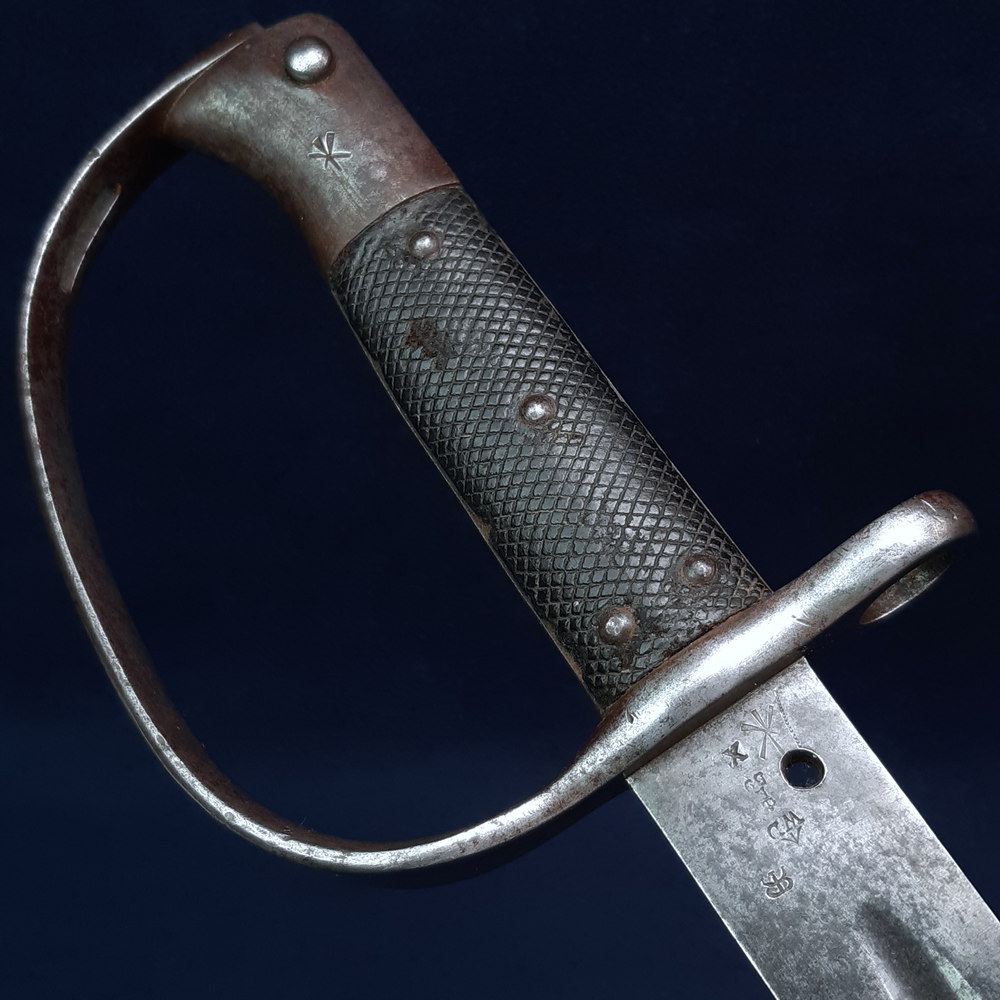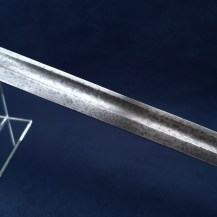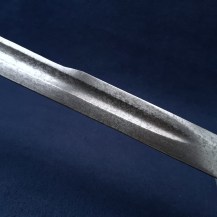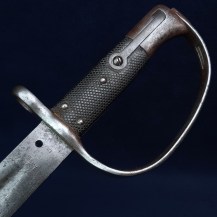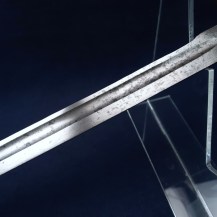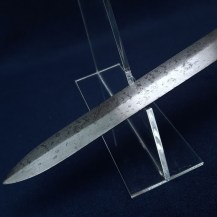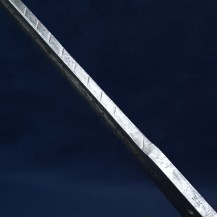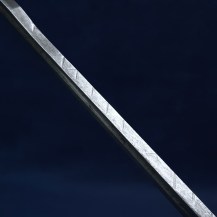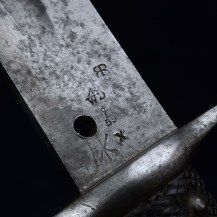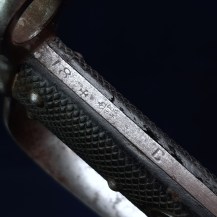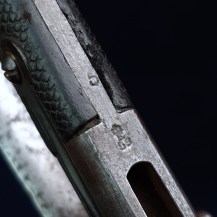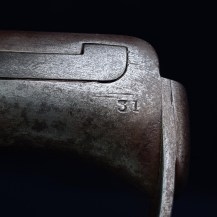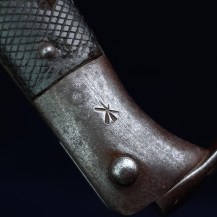British 1879 Pattern Martini Henry Artillery Carbine Bayonet with Sawback Removed
Straight single-fullered blade which has had its original sawback removed, steel knucklebow hilt with sword knot slit and muzzle ring. Black pressed leather grips with chequering, steel pommel with external leaf spring. No scabbard. Blade 25¾ inches in length, the bayonet 31¼ inches overall, muzzle ring 0.65 inches in diameter (1.65cm).
The blade is stamped on one side of the ricasso with a crown over ‘V.R.’ (the lettering very faint), the manufacture date ’12 / 8_’, meaning December of a year in the 1880s, the last digit no longer present due to the bored hole, two crown inspection marks with ‘E’, for the Royal Small Arms Factory at Enfield, a Birmingham repair/refurbishment mark of a crown over ‘BR’, and issue stamps /90 and /94 for 1890 and 1894.
On the other side it is stamped with a broad arrow atop ‘WD’, meaning War Department property, another crown inspection mark with ‘E’, for Enfield, an ‘X’ which indicates that the blade passed a manufacturer’s bending test, two R’s back to back, a mark meaning the bayonet was deemed unfit for service (often relegated to parade or cadet use), and two broad arrows point-to-point, a mark that was put on War Department equipment that was declared obsolete or to be sold off.
The spine of the blade has two more Enfield crown inspection marks, a letter ‘W’ and an ‘R’. The exposed tang has another Birmingham repair mark, a letter ‘B’, a Maltese Cross and the number ‘18’. The pommel is stamped next to the mortise slot with another Enfield inspection mark, next to the leaf spring with ‘31’ and next to the locking button with another two broad arrows point-to-point.
When mounted to a carbine-length rifle the 1879 Pattern bayonet gave a soldier good overall reach, and with its substantial hilt it could also serve as a fighting sword. Its saw-toothed back would have found use in brush-cutting, like other similar designs popular during the 19th century. Production of the bayonets at Enfield continued until 1890.
1879 Pattern bayonets with the sawback removed are a known variation, but no official order to manufacture them has been found and the exact reason for grinding off the saw blade is unclear. Many of the Martini-Henry carbines ended their service lives as drill weapons for cadet forces, and this modification may simply have been to make the bayonets safer for the youngsters who would be handling them on the parade ground. See page 156 of British & Commonwealth Bayonets by Skennerton & Richardson for discussion of this type.
The blade has some mottled patination. Its unsharpened edge has no damage, with a little wear to the tip. The hilt has some patination, heavier in the recesses and spotted on the knucklebow and pommel. The leather grips have some light handling wear, a few chips at the edges where the leather touches the exposed tang, and one small spot of abrasion on one side that has removed a few knurled diamonds to expose underlying leather.
A hole just over 4mm in diameter has been bored through the ricasso, possibly to allow the bayonet to be hung up or mounted.

